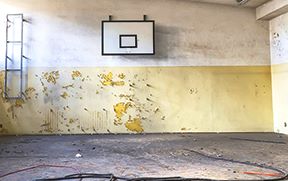Article by Hugh A. Mallon III, Executive Compensation Concepts, and Vanessa Wassenar, Creating Resilient Schools
What is customarily an independent school’s greatest asset — its physical plant — is not only a significant portion of the school’s endowment but is also largely ignored in planning and budgeting. Facing tremendous financial challenges, independent schools, along with colleges, universities and public schools, face a growing mountain of aging facilities and spiraling backlogs of renewal, replacement and scheduled maintenance.
If your school’s endowment were to shrink in value annually by the same 2 to 4 percent that your unattended facilities lose in value, wouldn’t your investment and finance committees feel compelled to revise their strategy and policies?
This is not an overnight phenomenon; it accumulated over many decades. And while there is no easy solution for independent schools, progress starts with leadership teams stepping up proactively to a problem they have for too long pushed aside. We understand the forces behind the neglect. Financial sustainability has been schools’ top priority, given the pressures of declining net revenue, escalating financial aid, endowment volatility and so on. But we also feel that the future of independent schools is at risk — and it is essential to act now.
Critical Thresholds
The state of affairs of colleges and universities is well documented. In 2012, the Chronicle of Higher Education published “How the Campus Crumbles,” a revealing report on deferred maintenance among the top 50 colleges and universities. The article piqued the interest of the press, regulatory agencies and the Moody’s rating service, and shocked many by the magnitude of the backlog: hundreds of millions of dollars at colleges, and billions at universities. The Association of Higher Education Facilities Officers has published numerous alerts on the subject, and a 2014 report from Sightlines, a consulting firm that works with academic institutions, estimated that more than half of all space on U.S. higher-ed campuses built between 1951 and 1990 was nearing, or had already reached, “critical lifecycle thresholds.”
The backlog of deferred maintenance within preK-12 independent schools is a guess, as many schools find this issue hard to quantify and no national studies of the situation currently exist. However, it’s safe to say that the facilities arms race on school campuses has exacerbated the inattention to existing buildings and even open spaces. Alumni, boards, donors and lenders can be seduced by the excitement of the planning process and the fanfare and glamour of ribbon-cutting ceremonies. Adaptive reuse, renovation and rehabilitation tend to have less allure and rarely enhance the legacy of the leadership in the same way that new construction does.
Complicating the issue are two structural issues that make quantifying, let alone attending to, deferred maintenance even less appealing: the inevitable obsolescence and lifecycles of existing facilities and components; and the fact that the Financial Accounting Standards for Non-Profit Disclosure Requirements does not require nonprofits (specifically, colleges, universities and now independent schools) to disclose deferred maintenance liabilities on their financial statements.
Combined, for better and worse, it’s just easier to build new than to take care of the old.
Beyond PPRRSM
What is a school to do?
First, understand that the largest intergenerational transfer of wealth in history is underway; for years, philanthropic organizations have projected a wealth transfer of many trillions of dollars continuing until the middle part of this century. We believe that funding for PPRRSM — provision for plant replacement, renewal and special maintenance — is one of the greatest gifts a donor can make to help future generations meet the financial requirements of preserving campus facilities history. By the same token, establishing or reallocating capital funds for PPRRSM is one of the greatest intergenerational gifts an institution can make.
Establishing and funding PPRRSM is just a step, however. To begin the process of addressing the liability of deferred maintenance, schools should undertake an assessment of their entire campus: buildings and components, lifecycles and replacement costs. They may then commence the slow but sure process of taking appropriate care of deferred and unanticipated maintenance issues. This includes creating and prioritizing a schedule of the details just listed, combined with an operating budget line item representing a standard 2 to 3 percent of replacement value.
At the same time, identifying funding sources — banks, lines of credit, donors, etc. — will mitigate the feeling of being overwhelmed and not knowing where to begin.
The emphasis on stewardship, leadership, legacy, affordability, sustainability and conservation can be woven into a narrative that will encourage others to join the effort to reduce deferred maintenance and plan for the future.
Here is another way to think about the situation: If your school’s endowment were to shrink in value annually by the same 2 to 4 percent that your unattended facilities lose in value, wouldn’t your investment and finance committees feel compelled to revise their strategy and policies? It’s not clear what prevents schools’ boards, heads and CFOs from doing the same for facilities, but this is likely because they do not recognize the physical plant as the asset it is.
As professionals dedicated to independent school financial sustainability, we understand that many schools feel they do not have the staff or funding to engage in a full campus audit, let alone fully fund PPRRSM. Executive Compensation Concepts and its strategic partners are collaborating on the development of an interactive, reliable model for recording and mitigating deferred maintenance.



